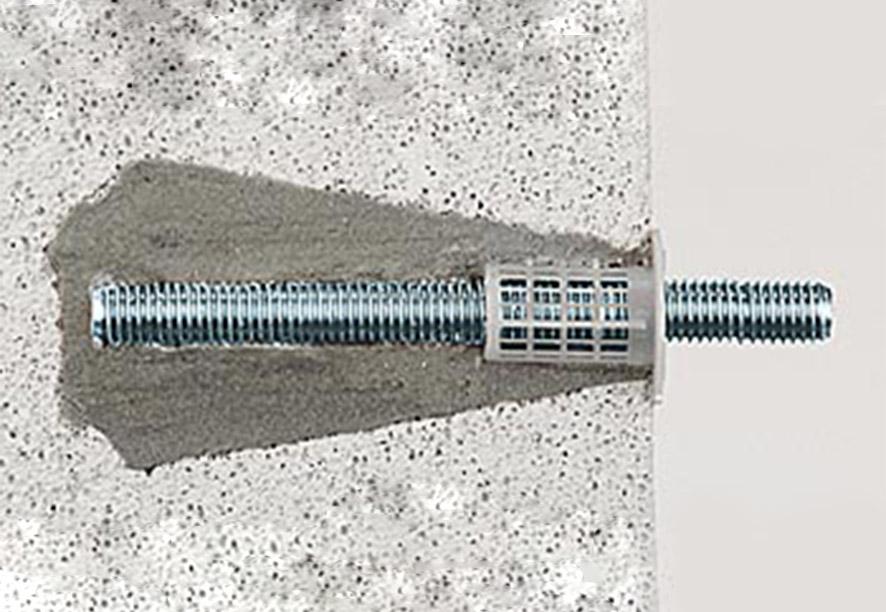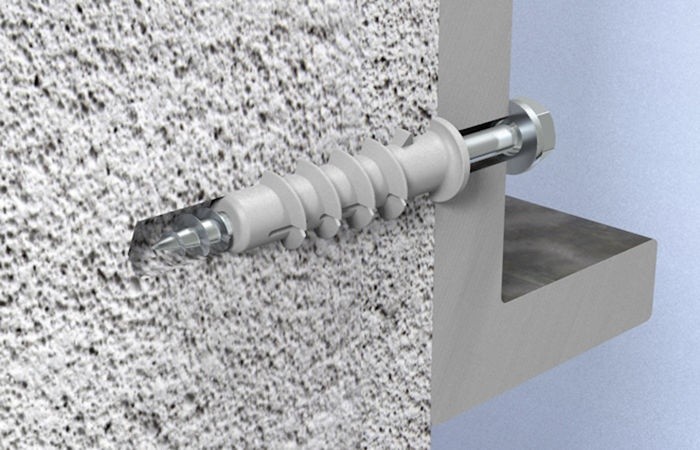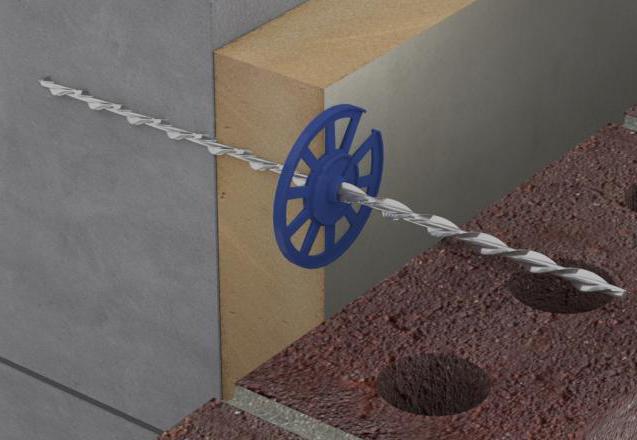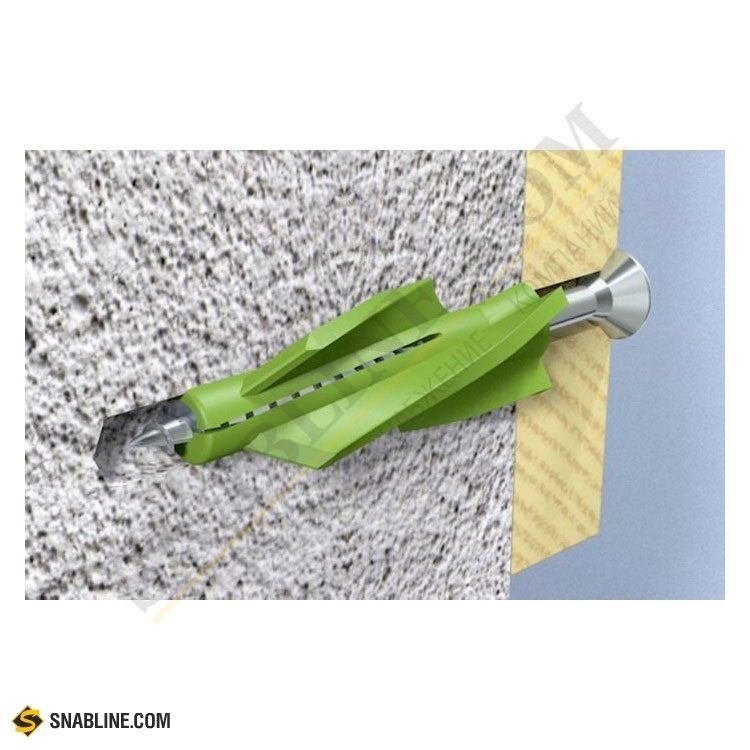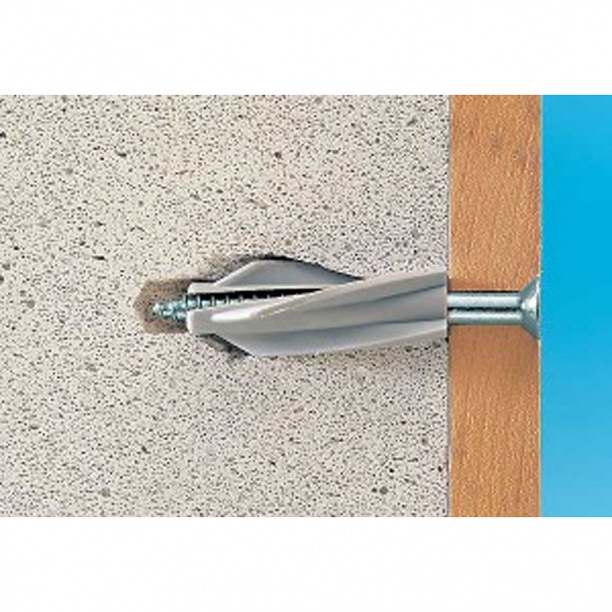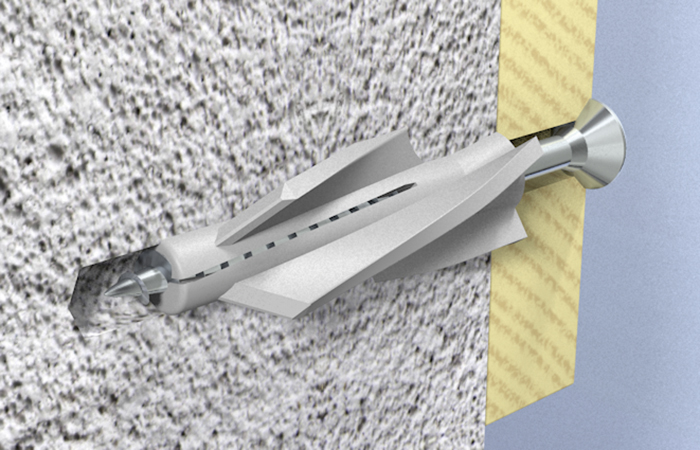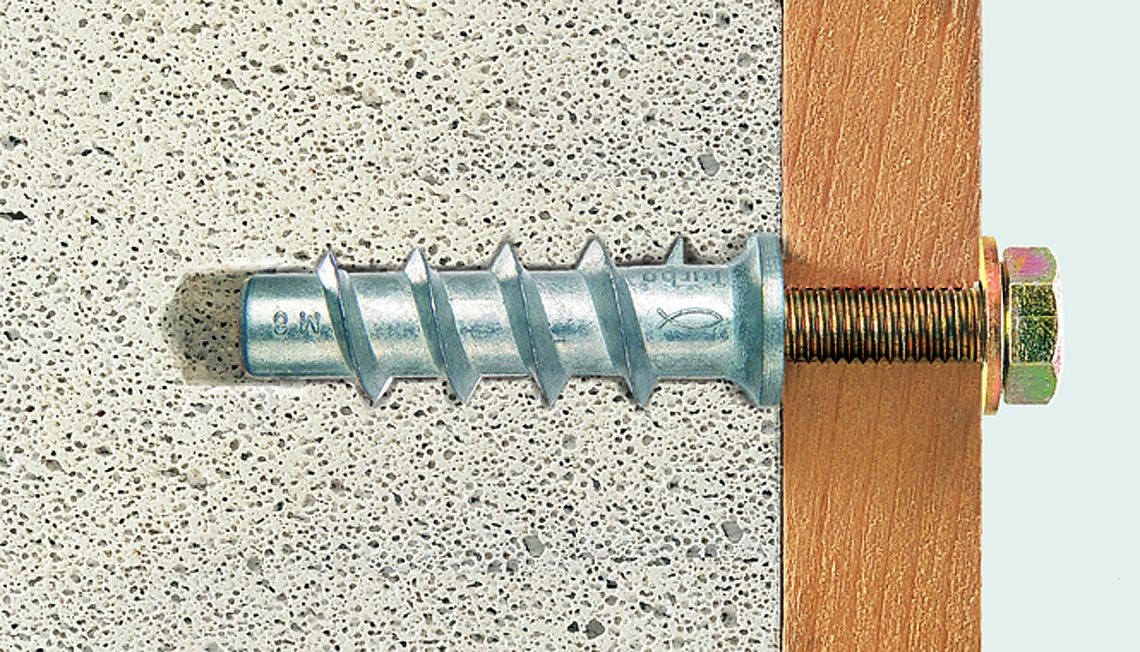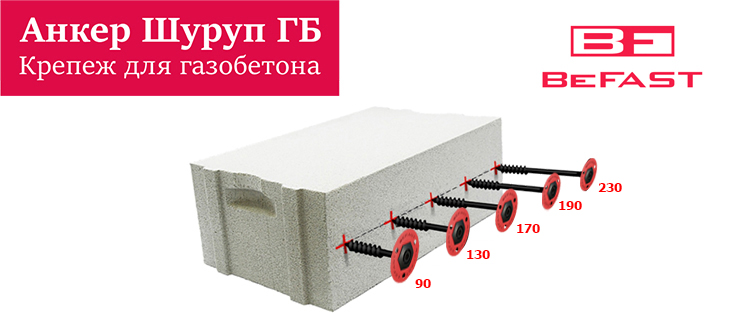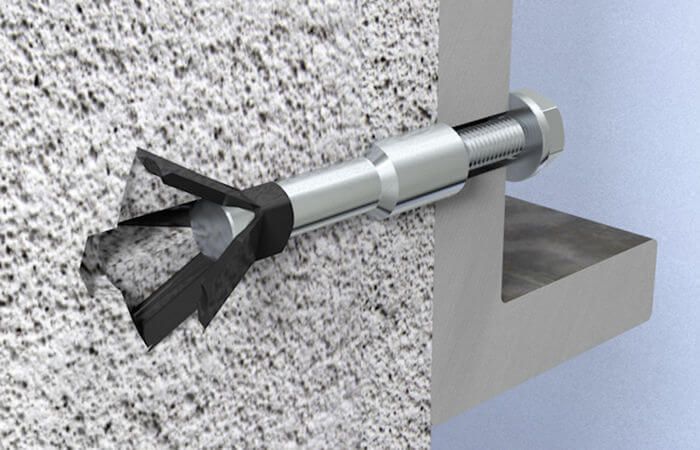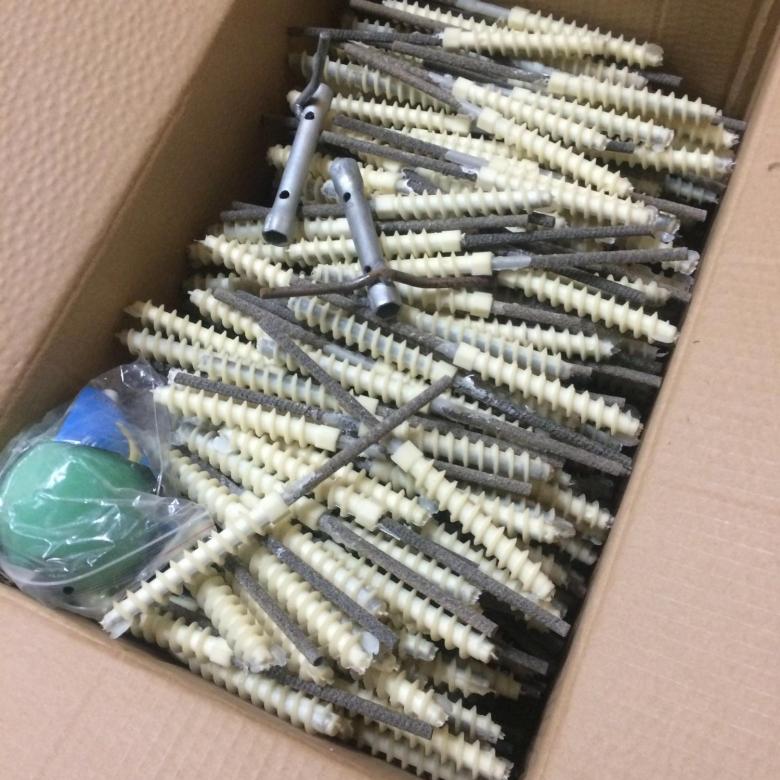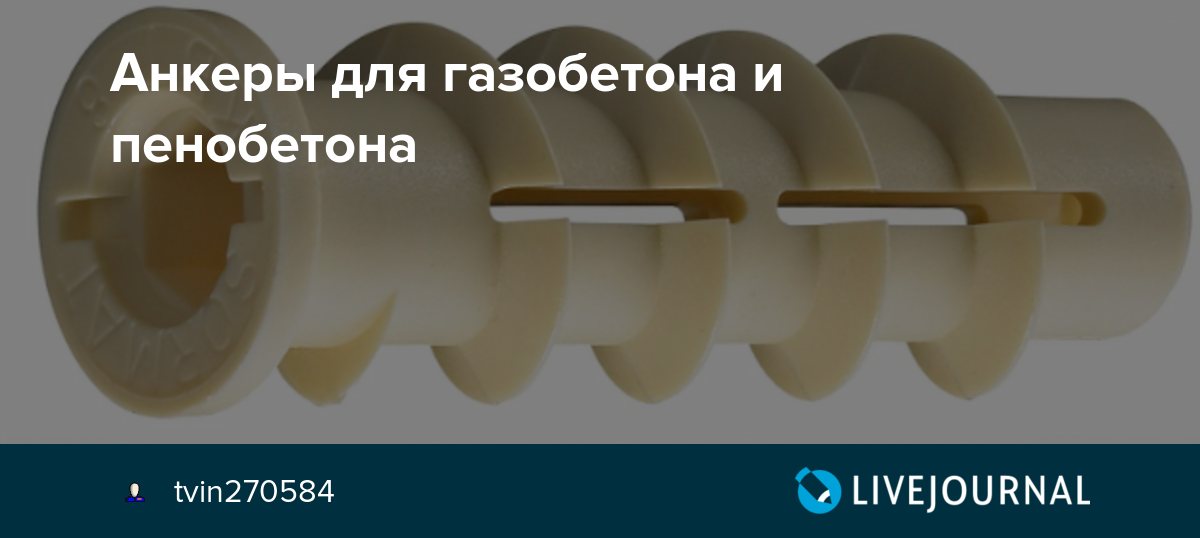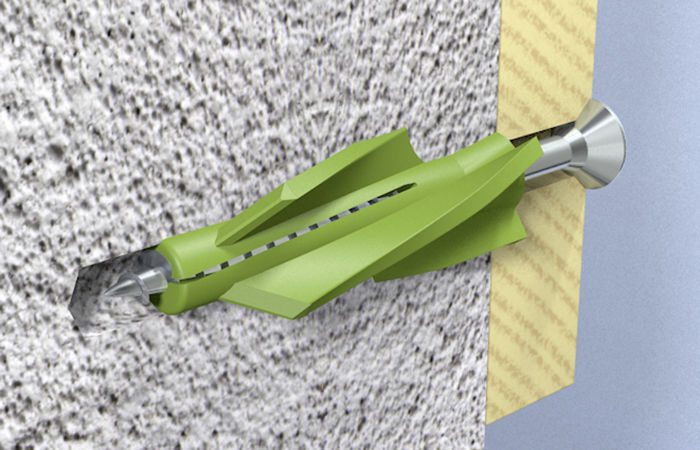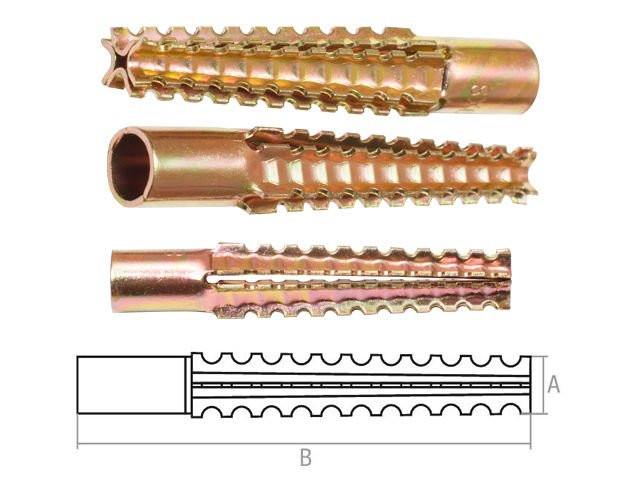Fastening building structures to aerated concrete
On such fragile walls, it is necessary to fix not only wires and pipes, but also heavy structures: floors, roof elements, etc. In such cases, fastening self-tapping screws in aerated concrete is not an option, a serious decision is needed.
As a rule, it is carried out even in the process of laying the walls, when a monolithic reinforced concrete armored belt is performed at the installation level of such structures. During pouring, studs and other embedded parts are installed into it, onto which fastening is subsequently carried out.
If for some reason you did not make an armored belt, or did not provide for mortgages in it, fastening is made only to chemical anchors.
When choosing an attachment for aerated concrete walls, take into account such features
When choosing hardware, take into account the strength of the working surface, the size of the parts and their resistance to corrosion.
The higher the density of the material, the stronger the aerated concrete. This indicator sets the limits of the load on the fasteners. Technical characteristics in numerical terms are indicated on the packaging of building blocks after the letter D.
The strength of the connection is influenced by the size of the dowels. So, when fixing massive structures, products of large diameters and lengths are used.
The resistance of the fasteners to corrosion provides the possibility of their use in the installation of external structures and the arrangement of unheated rooms.
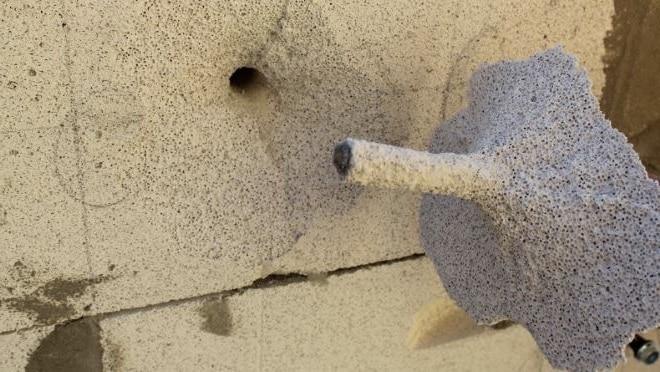
Scope of application
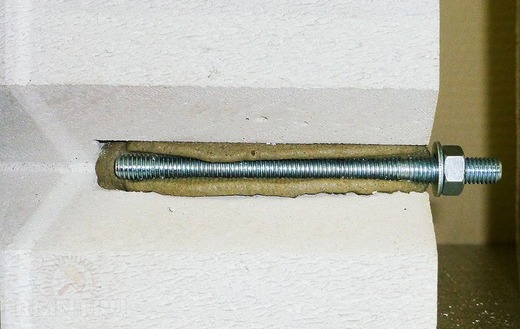
Chemical anchor in aerated concrete are used less often. They are used in cases where it is required to provide a reliable fastening for massive objects. Mechanical anchors cannot support, for example, the weight of massive equipment.
Epoxies are used mainly on solid substrates. They are used for fastening:
- wall structures;
- beams;
- fences along the roads;
- creation of noise-insulating screens;
- when installing reinforcement outlets;
- when installing mounted equipment.
Such a composition can be applied:
- in a humid environment;
- under the water;
- both outside the building and for interior work.
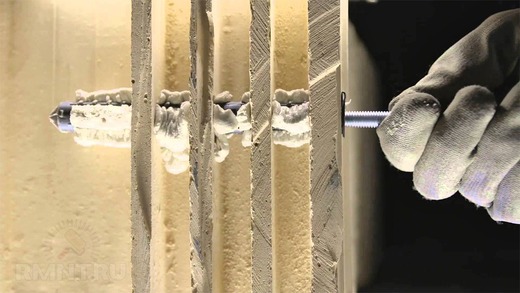
Its composition:
- does not create stresses in the structure of the porous wall;
- does not contain styrene;
- creates fasteners with smooth reinforcement.
The solidification of the mass depends on the air temperature. The time can last from 7-180 minutes. or 7-48 hours
Polyester anchors are used to create:
- enclosing structures;
- when installing facade elements;
- for installing translucent elements;
- when installing engineering communications.
> Typically threaded rods are used with polyester compounds. The polyester anchor contains no styrene. Therefore, it can be used on both indoor and outdoor fasteners. The polyester anchor cures within 2 to 30 minutes and hardens within 25 to 180 minutes.
The anchor bolt for aerated concrete can be smooth or threaded if a vinylester anchor is used. It is used to create fasteners in wet substrates. It does not create unnecessary stresses in the structure of aerated concrete. This adhesive solution is safe because it does not contain harmful substances. It is used to perform internal and external fasteners. Does not create stresses after installing fasteners in the structure of the aerated concrete block. Hardening is observed after 15 minutes, or after a day.
Epoxyacrylate anchoring composition has gained wider application due to its qualities. The period of setting and hardening of the composition is 2-24 and 15-180 minutes, respectively. Epoxyacrylate retains its properties when the temperature drops to -5 ° C, and also provides resistance to fire in case of fire for up to 2 hours.Epoxy acrylate anchoring compound is suitable for anchoring floor slabs in an aerated concrete house.
Why you should not attach unnecessarily heavy structures to the gas block and foam block
About the gas block
Autoclaved aerated concrete has characteristics of thermal conductivity close to foam plastic, since, like insulation, it contains air bubbles in its structure. At the same time, the foam has practically zero bearing capacity.
Why should the gas block be much more durable? It should be noted that it copes well with a load evenly distributed over the area, for example, in masonry. But it does not tolerate local loads from ordinary dowels and anchors, that is, it simply does not hold
And whatever the manufacturers of such blocks say, you need to load the material locally with great care - use special fasteners, spread them over a large area, do not hang very heavy structures without a metal frame
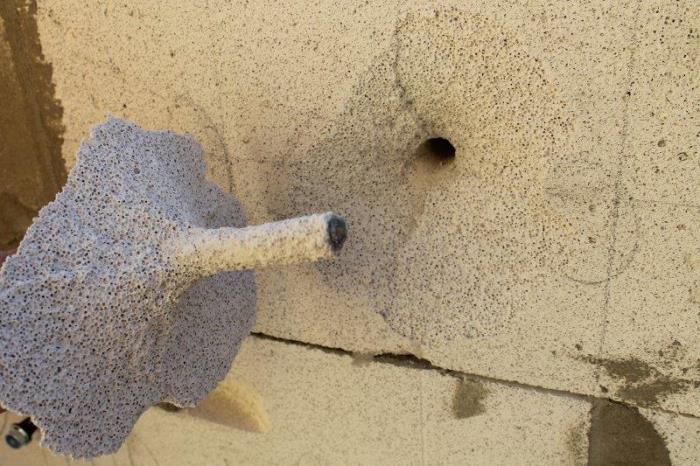
Excessive loading on aerated concrete can lead to similar consequences.
The weakest point of the gas block in terms of bearing capacity is variable pressure. Periodic suspension and removal of any weighty structure from the anchor will contribute to crumbling of the material around the fastener and the failure of the attachment point.
About foam block
Foam concrete in modern construction is used less often, and on average it is heavier and stronger than aerated concrete. Of course, the strength depends on the class of the material - the higher the class, the more durable it is, but at the same time it loses somewhat in its heat-insulating properties.
Perhaps we can say that the foam block is something between concrete and aerated concrete in terms of strength. However, when choosing an anchor for foam concrete, it is better to be guided by the same principles that are applicable when using a gas block.
Characteristic
Aerated concrete is rightfully recognized as one of the most practical and affordable materials. It makes durable and strong houses, as well as reliable outbuildings. However, it should be borne in mind that this material has a cellular structure, when faced with which you need to take into account many nuances. The main characteristic feature of such a material is its fragility and pliability. Porous blocks can be trimmed or trimmed away from them effortlessly. And also we must not forget that special fasteners are used for such a structure. Traditional fasteners tend to hold poorly in such bases, which makes the whole point of their use disappear.
For aerated concrete, special dowels should be used. The design of such parts is a spiral bushing, on the surface of which there are ribs. The latter elements become wider during the screwing in of a self-tapping screw or screw, due to which they firmly enter the loose aerated concrete surface. This simple, but effective device can easily withstand impressive loads. With the use of special dowels, the owners of the dwelling have the opportunity to hang heavy decorative objects of any size on the walls.
Modern manufacturers produce these types of dowels in two variations. They differ in design features.
- By the shape of the ribs of fixation. Such fasteners can be equipped with a classic helical spiral or have cone-shaped ribs. The edges of the latter may resemble spiral-like blades.
- By the installation method. The dowels are either screwed into the base or driven into it. It is considered to be the most reliable ones that are screwed in. It is recommended to contact the hammered fasteners if the aerated concrete floor is planned to be equipped with a collet.
Fastening building structures to aerated concrete
In general, the process of mounting the mounts is similar for all options. First of all, a hole is made, and then a cartridge is inserted. The only difference can be with a chemical anchor, since glue is used there.
Chemical anchors are fixed as follows:
- Preparatory work. You need to drill a hole with a drill.
- Next, the hole must be cleaned of dust. For this, a brush or a medical pear is used.
- A cartridge with a chemical composition is installed. To do this, insert a capsule with glue into the recess. The latter is squeezed out.
- The anchor is screwed into the hole.
- Wait for the glue to dry. There are times when you need to wait 2 days for complete drying. It all depends on the composition, but temperature, humidity and other features of the environment are also considered important factors.
- Once the composition has hardened, the washer and nut can be installed.
The installation process using a mechanical anchor, nail dowel or self-tapping screw is the same, but without the use of glue.
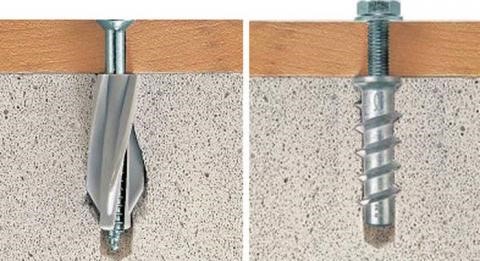 It looks like a mount inside aerated concrete.
It looks like a mount inside aerated concrete.
Related videos:
Each mounting method has its own advantages and disadvantages. When choosing, you should take into account the material, density, and characteristics of the room.
Previous post How to fix a window sill to a plastic window
The next entry Features of fastening the gate to brick pillars
Dowel
The part is a spiral bushing with ribs on its surface. At the moment the screw is screwed in, they expand, due to which they firmly enter the soft surface of the base. Such fasteners can be made of galvanized steel or plastic.
The first option is the most common and the most expensive. It is used for the installation of profiles, installation of hinged equipment and furniture, fixation of various pipelines. Such fasteners are widely used in fire hazardous areas.
Release metal dowel for aerated concrete in 2 modifications, which differ in design features and installation methods. Parts can either be screwed into the base or hammered into it. The latter option is used if the aerated concrete floor is planned to be equipped with a collet.

According to the shape of the fixation ribs, fasteners with a classic helical spiral and cone-shaped dowels equipped with spiral blades are distinguished. The design of metal elements also provides for the presence of a stopper flange or cuff, due to which the part will not rotate.
Corrosion resistance is the main advantage of plastic products. The materials for them are polypropylene and polyethylene. The positive characteristics of parts include their efficiency, environmental friendliness, and immunity to aggressive environments. Such dowels are not intended for outdoor work, since with the onset of cold weather, plastic can burst.
A separate group is made up of nylon aerated concrete fasteners. They are more durable, so they can be used for facade cladding. Together with them, galvanized screw elements with 2 types of heads are used - countersunk or hexagonal. The disadvantage of this type of mount is the high price.
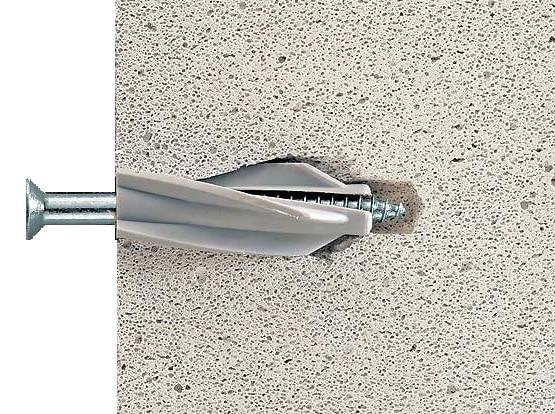
Depending on the scope of application, there are several types of dowels:
- Universal. It can be mounted on any concrete surface. On a full-bodied basis, fixation occurs in a standard way. In a cellular covering, the product is rolled up into a stop unit. However, the load-bearing capacity of universal dowels is lower than that of spacers.
- Dowel-nail, which has a wide range of applications. At the time of fixation, a nail is inserted into the fastener, and the screw is not screwed in. In order to avoid scrolling the part, use a sleeve.
- "Pancake-like" structure of frame dowels allows to reduce the load on the porous surface of the block.
Tool and surface features
Installation tools:
- electric hand drill;
- drill with victorious soldering;
- hammer;
- wrench or screwdriver for screwing in a screw or screw;
- adhesive mixture for a chemical anchor;
- special gun for glue mixture.
The main condition for the installation of objects and devices is the correct choice of hardware.
Aerated concrete, having a porous structure, is a relatively fragile material, so the question arises - what hardware are needed for the fastening to be reliable and meet all the requirements for operating the structure.
There is a large range of products that make it possible to fasten structures reliably and quickly.
From the video below, you will learn about fasteners for aerated concrete.
Why does foam concrete need special fasteners
Foam blocks are made from water, sand, cement and a special foaming agent. The blocks are cellular, the material is fragile enough for mounting various fasteners.
The main distinctive features of foam blocks: low weight, low density, high level of hygroscopicity, porous structure. For the most part, properties are advantages during the construction and operation of buildings, but not at the time of attaching some objects to the walls.
The structure of foam concrete is porous, adhesion to materials is not very good, therefore, the blocks cannot always cope with the loads, and therefore special dowels are provided for them.
Correctly selected fasteners for the foam block will not only fix equipment or furniture with high quality, but will also strengthen the working structure, significantly increase the percentage of permissible loads.
Fasteners for foam blocks assumes a certain design of fixing parts - usually they consist of the following elements: a screw, a ring, a half-ring, a side, an empty sleeve with a spacer. Many anchors are made with teeth, which become a reliable obstacle to the rotation of the part.
There are also chemical anchors for the foam block, which are designed specifically for work in and provide maximum fastening quality. In this case, the main task of the dowel is to create an internal support in the block in the process of expansion inside the aerated concrete and to preserve the fragile material from destruction.
Dowels can be of different diameters and lengths, made of metal or plastic, are supplied in packs of 50-1000 pieces. According to the scope of application, they are intended for external / internal work, according to the method of installation - driven, screwed in and others (chemical anchors are distinguished separately).
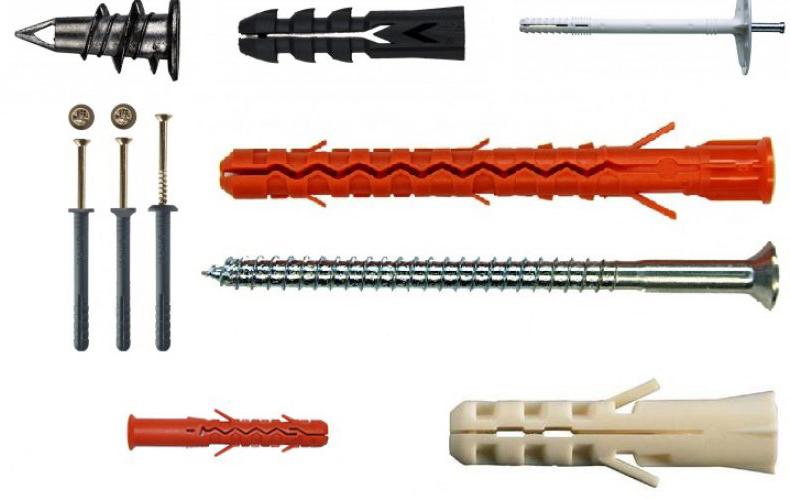
Chemical anchor
This type of fastening, as a chemical anchor, is a fairly new and already in demand method. The builders appreciated it. Chemical anchoring has its advantages and disadvantages.
The advantages of a chemical anchor include:
- high load capacity factor for fasteners;
- compliance with GOST, chemical composition is safe, environmentally friendly;
- versatility, it is used for any building material;
- high resistance to weather fluctuations, low temperatures;
- low price when compared with steel anchors.
The disadvantages include:
- strict adherence to technology;
- purchase of special equipment, namely, a brush, pump, gun and drills;
- additional time for solidification of the chemical solution.
Chemical fasteners for foam concrete include a threaded steel stud, maybe a special rod, a chemical mixture, additional bushings.
Sequence of attachment of chemical anchor
- Using a drill, make a cylindrical hole. Then it needs to be shaped into a cone with an expansion in depth.
- The finished hole is thoroughly cleaned. You can use a pump for this.
- A centering sleeve is inserted into the base.
- A chemical solution is poured into the hole through the sleeve; a construction gun is used for this.
- The threaded rod (stud) is screwed in.
- We leave time until the chemical solution completely solidifies.
The set of the chemical anchor includes an easy-to-use package with a dispenser. Installation is easy and high structural strength is achieved.
 Fastening chemical anchors
Fastening chemical anchors
And so, for fastening light structures, decorative elements, ordinary self-tapping screws are quite suitable. They can be designed for woodworking or aerated concrete. Aerated concrete nails should have a wedge-shaped or curved tip inside the concrete cavity.
For heavy structures, such as plumbing, kitchen cabinets, boilers, it is worth using fasteners for foam concrete, with wedging dowels. Reliable fixation is carried out precisely thanks to the internal stop. All hardware must be corrosion resistant. This is especially true for external wall mountings.
Tips & Tricks
When installing dowels in the gas block, you cannot use a screwdriver, since this device operates on electricity, which makes it more difficult to control it. Such a device can break the thread by twisting the screw.
When making a hole for dowels in the gas block, it is important to take into account that they should not be larger than their diameter. Otherwise, the fasteners simply will not hold securely in the base.
The hole depth should be slightly more than the dowel length parameter. The tip of the screw must leave the dowel for maximum reliability.
Many people, having become acquainted with dowels, begin to use them at any opportunity. However, experts do not advise turning to too powerful mounts if you plan to hang hooks, pictures and other little things. For such purposes, simple plastic fasteners are more suitable, the size of which is about 8 mm.
About fasteners for aerated concrete - nylon dowel and metal dowel (crocodile), see the next video.
Types of fasteners and performance of work
The type of product is chosen depending on the expected load:
- for fixing hinged mirrors or lamps, nylon dowels with a cross section of up to 12 mm are suitable;
- when installing a pipeline and bulky objects, metal parts are chosen;
- frame types of fasteners are used to fix window and door frames;
- universal facade dowels are used when installing external profiles for facing slabs;
- only light objects are attached to wood screws - photo frames or decorative elements.
Installation is carried out in several stages.
In order for the products to sit tightly into the base, it is necessary to properly drill the holes. To do this, it is best to use a hammer drill or hammer drill with the impact disabled. The drill should have a cross section 1 mm less than the fastener itself. The only exception is steel hardware. For them, the hole will be reduced by 2 mm.
After cleaning the recess from concrete dust, a dowel is installed. The plastic fasteners are screwed in with a screwdriver. Metal parts are hammered into the bore hole with a hammer. In the course of work, it is necessary to ensure that the product does not warp.
At the final stage, a self-tapping screw or a standard mounting bolt is screwed in. In this case, it is impractical to use an electric tool, since when connected to the aerated concrete block, the screw element may be damaged.
Fasteners for aerated concrete
On ordinary wood screws only very light objects such as photo frames can be attached to aerated concrete. In all other cases, special fasteners will be required.
Fastener requirements
When choosing which fasteners to use for aerated concrete, you need to consider the following points:
The density of wall blocks, indicated in the marking of products by numbers after the letter D. The higher it is, the less pores in the material, and the stronger it is. The load limit when pulling out fasteners depends precisely on this indicator, and the instructions from the manufacturer on the packaging contain this information.
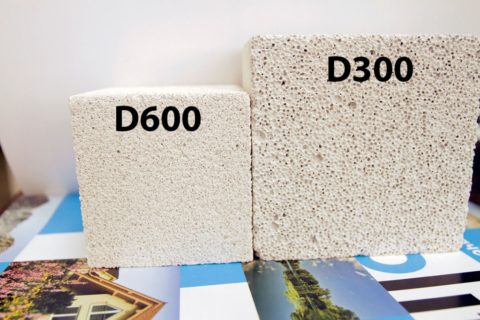 The numbers show how many kilograms in a cubic meter of material
The numbers show how many kilograms in a cubic meter of material
Fastener parameters - its length and diameter. The larger they are, the more load it can withstand.The load-bearing capacity must also be indicated on the packaging or on the certificate.
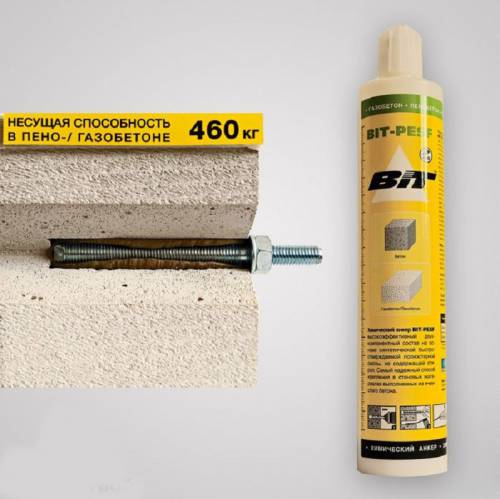 Chemical anchors have the highest load-bearing capacity
Chemical anchors have the highest load-bearing capacity
Corrosion resistant. This parameter is especially important when fastening in aerated concrete is carried out from the side of external walls or in unheated rooms. Steel hardware must be covered with a protective layer.
 Aerated concrete punch
Aerated concrete punch
Mounting options
Let's take a closer look at which aerated concrete fasteners are used most often.
Let's start with the traditional views:
| Image | Application |
|
|
When a smooth steel nail enters the sleeve, its base opens and enters the material at an angle. Suitable for all types of concrete. |
|
|
Allows you to attach the profile to aerated concrete for attaching facade panels and hang wall cabinets and shelves. |
|
|
It is used only for light loads: fixing light shelves, curtains, skirting boards, switches, cable channels, etc. |
|
|
Helps to carry out fastening to aerated concrete of window and door frames, wall cabinets. |
|
|
Specially developed for aerated concrete. It is used with ordinary self-tapping screws for the installation of wooden and metal facade subsystems, windows, doors, suspended ceilings, sanitary equipment, pipelines. |
|
|
Designed for any aerated concrete, wide range of applications. |
|
|
Solves the problem of how to attach heavy objects to aerated concrete: water heaters, air conditioners, hanging pipes, heavy wall cabinets, etc. |
All of these elements may have other varieties than the images shown in the table. For example, turbo dowels with self-tapping threads are made from nylon.
 Turbo dowel FTP K
Turbo dowel FTP K
And from galvanized steel - spacer four-blade toothed dowels. Their segments at the moment of screwing in the screw move apart, reliably biting into the cellular materials.
 Steel expansion dowel
Steel expansion dowel
As already mentioned, one or another hardware and method of fastening are chosen depending on the expected load.
If you need to mount the shelves, you need to carefully drill aerated concrete at a right angle, insert a dowel into the hole and screw a screw into it.
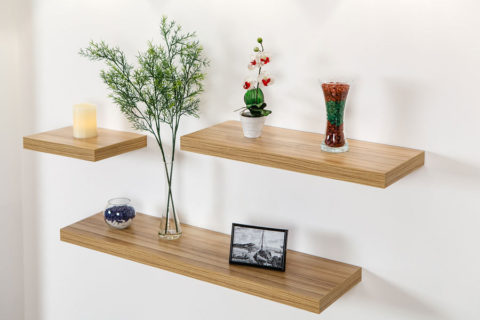 Shelves with covered fixing on aerated concrete wall
Shelves with covered fixing on aerated concrete wall
- And for hanging a light picture or mounting an electrical switch, a simple self-tapping screw screwed at an angle of 45 degrees to the wall is enough.
- If you need to securely secure heavy equipment or install a metal front door, it is best to use chemical anchors.
In the installed form, they are capsules of synthetic resins and organic polymers, which embed holes in the aerated concrete wall, firmly holding a metal rod or threaded rod in it.
The advantages of such fastening include exceptional reliability and durability, non-susceptibility of the adhesive base to thermal expansion and resistance to aggressive media.
No special qualifications are required for fastening with chemical anchors, everything can be done by hand.
For this:
- A hole of the required depth is drilled in the wall, its bottom is slightly expanded by the oscillatory movements of the drill;
- Construction dust is blown out of the hole, and a sleeve is inserted into its neck;
- The cavity is filled with an adhesive solution using an assembly gun;
- An anchor rod is immediately installed in it;
- After the mortar has hardened, fasteners can be carried out.
The price of such fasteners is higher than that of other types, but the reliability does not raise the slightest doubt.
Classification of self-tapping screws for aerated concrete and foam concrete blocks
| Profile | Diameter, mm | Length, cm | Photo | A comment |
|---|---|---|---|---|
| Nog | 7,5 | 7 — 20 | Dowel with a dowel for foam concrete | In aerated concrete blocks, they can be used without dowels. In foam blocks only with dowels. |
| Universal | about 6 | up to 22 | Universal self-tapping screw for foam concrete | Average thread pitch. Can be fixed without dowels |
| Christmas tree (mef) | up to 8 | up to 20 | Christmas tree screw (mef) for foam concrete | Average thread pitch. For use only with mef dowels |
Dowels for self-tapping screws
Without dowels, self-tapping screws for aerated concrete are not often used due to the porous structure of the blocks. They are used for fastening lightweight structures. So, they can easily fix the reinforced mesh on the aerated concrete surface before applying the plaster. For such a fastening, self-tapping screws with a wide pitch, at least 10 cm long, are selected.
The perforator in this case cannot be used, since the aerated concrete will crumble strongly. A drill with a thin drill is used. There is a way to screw self-tapping screws into a porous surface using machine oil. A few drops of oil are added to the prepared hole, so the hardware is easily screwed in. The hardware will sit tightly, it will be difficult to unscrew it in the future.
Self-tapping screws with a "herringbone" profile can be hammered into foam concrete blocks with a hammer. Consumables together with dowels are driven in "forever", it is almost impossible to dismantle them. The work must be done quickly so that the prepared hole does not begin to crumble.
How to use?
The principle of installation of dowels is the same as for other types of fasteners. You need to act in the following order:
- first you need to prepare holes for the dowel, which should be smaller than the diameter of the attachment; for example, for fasteners of 8 mm, you will need to use a 7 mm drill;
- if you take a tool such as a punch, then you need to turn off the impact mode in it, of course, it is advisable to use a drill in this case, since it is more effective;
- plastic fasteners must be carefully screwed in using a screwdriver; if metal parts are used, then they should be driven into the bore hole with a hammer;
- when doing work, it is imperative to make sure that the products do not touch or are crooked;
- when the cuff is installed all the way, you can proceed to screwing a self-tapping screw or a universal-type bolt;
- it is necessary to screw in the self-tapping screw with a screwdriver, adhering to the required depth.
The choice and features of fastening anchors for foam and aerated concrete
What anchors are better to choose
The choice of anchors should be based on the weight that will fall on each individual fastener:
- Anchors capable of supporting up to 10 kg per fastener. Such products work mainly due to the expansion and represent a thickened plastic element that acquires a conical shape in working condition or expands inside the material. They can be used to hang small shelves, paintings, hangers, etc.
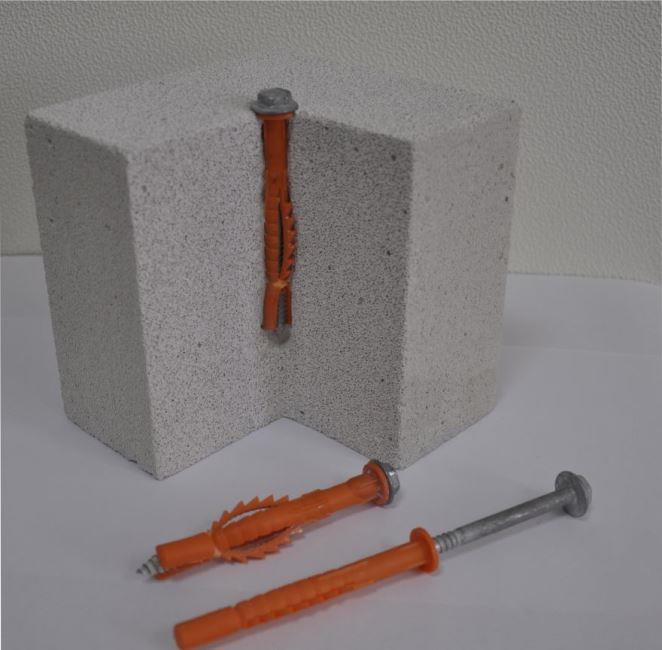
Anchors for anchoring lightweight structures in aerated concrete
- Anchors for a mass of 20-25kg. These are fasteners of a special shape that allow to spread the load inside the material to the maximum possible area inside the base. They are usually helical in shape, of considerable length and diameter. They can be hung, for example, heating radiators, kitchen cabinets, facade cladding systems.
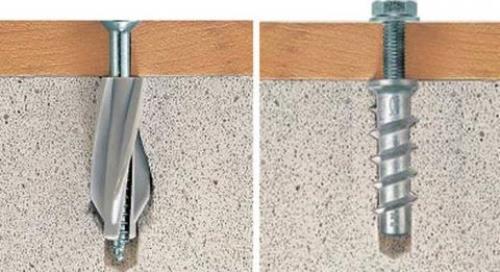
Anchors for anchoring medium and heavy structures in aerated concrete
- Chemical anchors for 30kg and more. They are special solutions supplied in tubes. A long hole of large diameter is drilled under them in the aerated concrete base, cleaned, filled with the composition and a metal pin is inserted. After hardening, the solution turns, in fact, into a hard capsule, comparable in strength to concrete. At the same time, it takes on the local load from the suspended structures and, due to its large surface area, more evenly transfers this load to aerated concrete.This solution allows you to attach boilers and other heavy elements of the interior and exterior to the walls made of foam block and aerated concrete.

Chemical anchors for anchoring heavy structures to aerated concrete
When choosing an anchor for aerated concrete, give preference to oversized products with a large surface area. The longer and thicker the anchor is, the better.
Practical recommendations for fixing in aerated concrete
Before you do the fastening in aerated concrete with your own hands, remember that:
- Installation of fasteners must be carried out with a minimum distance of 10 cm from each other. Otherwise, the overlap of the stress areas in the gas block can lead to its collapse and fall of the fixed structure. The greater the spacing of the anchors relative to each other, the better and more reliable the fastening.
- Do not fasten the anchor close to the edge of the block, the minimum indentation here is also 10 cm.
- As already noted, the class of aerated concrete largely determines its ability to withstand the fastening of massive structures. For example, a block of class B2.5 will bear about 2 times less weight in comparison with B5.0, although the latter is rarely used in low-rise construction.
- Despite all of the above, it cannot be said that this or that fastening in aerated concrete can be considered 100% reliable. The material is fragile, and it will be better if heavy objects are fixed through a specially mounted metal frame rigidly fixed to the concrete floor and / or ceiling. At the same time, to save space, the frame can be "drowned" in aerated concrete that is easy to slice.
- It is necessary to drill holes in the gas block for anchors in the drilling mode without impact. The drill should be selected 1-2 mm less than the dowel diameter, so that after hammering the fasteners "sit" in the hole tightly.
Video on the use of the Fischer chemical anchor in walls made of various materials.
So, we figured out how and by what means it is possible to fasten to aerated concrete and foam concrete blocks. How to mount to other building materials, you can find out in our next articles.
Feasibility of application
Chemical injection compositions and ampoules have a high cost, their purchase is advisable when working with hollow and porous concrete grades, in dense structures they are justified when mounted near the edge or in case of increased expected loads: breaking, vibration, weight. Anchors of this type support the weight of steel elements, consoles, columns, facade systems, equipment, fences, if necessary, they are used for additional fastening of reinforcing bars. When choosing this option, the quality of the base material practically does not affect the reliability of fixation, the products of Hilty, Fisher and their analogues are designed for operation in cracked concrete.
They are also advised to buy:
- In the absence of an accurate calculation of the dimensions of the hole.
- At high seismic and vibration loads on the object.
- If it is necessary to violate the recommended intervals: placement along the edge of the structure or next to an adjacent anchor. In contrast to standard concrete dowels, they do not have a thrust force.
- For operation in high humidity conditions (chemical composition reliably protects metal fasteners for concrete from corrosion).
- For installation in fire protection systems, the fire resistance of specialized types reaches 2 hours.
The nuances of fastening to concrete
To install a chemical anchor, you will need a rock drill or other type of drilling tool, a metal dust brush, a pump or pneumatic blowing equipment, a construction gun and a mixer. The procedure for fastening to full and hollow concrete is different. In the first case, diamond drills are often used to prepare the hole, the walls need to be roughened. The cavity is cleaned with a brush and blown with air at least 4 times; it is not recommended to use water at this stage.
The resulting hole is filled by 2/3, after which the installation of metal fasteners is carried out (most often by inserting or scrolling). The next stage is the delay of the time specified in the instructions (approximately - 20 minutes), and only then the final fixation of the bolt is allowed. It is necessary to take into account the high speed of solidification of the chemical composition; at any breaks, the spout is wiped and closed with a cap.
Hollow and slotted concrete requires a slightly different approach when installing an anchor. The hole preparation process is no different. But before the filling stage, a plastic or metal sleeve (mesh or perforated) is inserted into it. Its purpose is to save the mixture; in its absence, the consumption increases significantly. Regardless of the type of concrete, it is not recommended to rinse the hole with water, this negatively affects the adhesion properties.
Mounts cost
| Anchor marking | Manufacturer | Short description | Volume, l | Price, rubles |
| HIT-HY 100 330/2 | Hilty, Liechtenstein | Standard chemical adhesive anchor for anchoring in concrete | 0,33 | 1530 |
| HIT-HY 100 500/2 | 0,5 | 1850 | ||
| HIT-MM PLUS 330/2 | Low-cost hybrid composition based on uranium-methaacrylate | 0,33 | 645 | |
| HIT-MM PLUS 500/2 | 0,5 | 840 | ||
| HIT-ICE | For fastening at low temperatures | 0,3 | 2640 | |
| HIT-RE 500-SD | Epoxy adhesive for installation in cracked concrete, restoration of heavy reinforcement | 0,33 | 3100 | |
| 0,5 | 3340 | |||
| HFX | Ruler in solid cartridge for use with standard nail tools | 0,275 | 1120 | |
| FIS V 360 S | Fischer, Germany | Two-component vinyl ester injection for universal use | 0,36 | 1390 |
| FIS EM 390 S | The same for underwater installation | 0,39 | 1470 | |
| FIS VS 300 T | With extended setting time, recommended when working in high temperature conditions | 0,1 | 640 | |
| FIS VW 360 S | For anchor application in winter, working range - from -15 to +20 ° C | 0,38 | 1160 | |
| KEM-VE 10 | Sormat, Finland | Vinylester capsule anchor with thread size M10, suitable for underwater installation | 90 | |
| KEMLA М12 | The same, on a polyester base (increased pull-out load) | 190 | ||
| BIT-PESF | BIT United Ltd, UK | Adhesive anchor for aerated concrete, gas silicates, foam blocks. It is characterized by high viscosity | 0,3 | 660 |

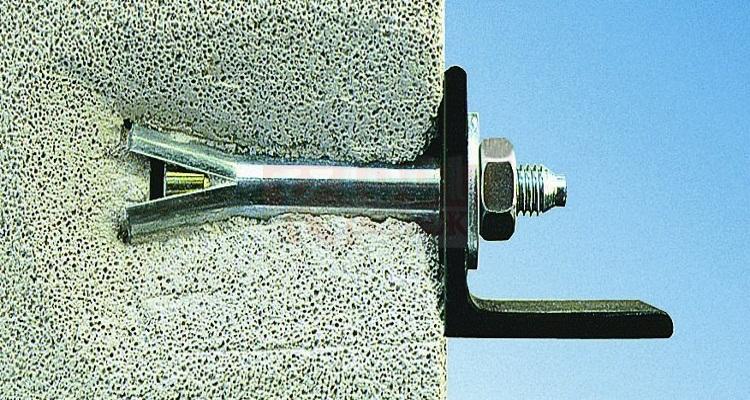

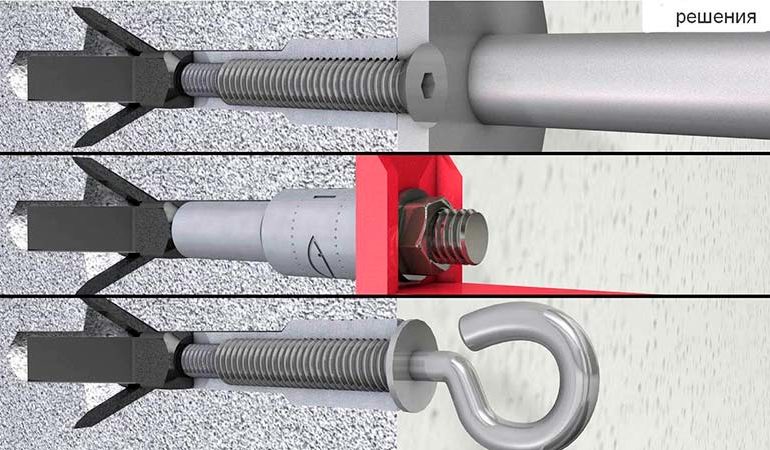
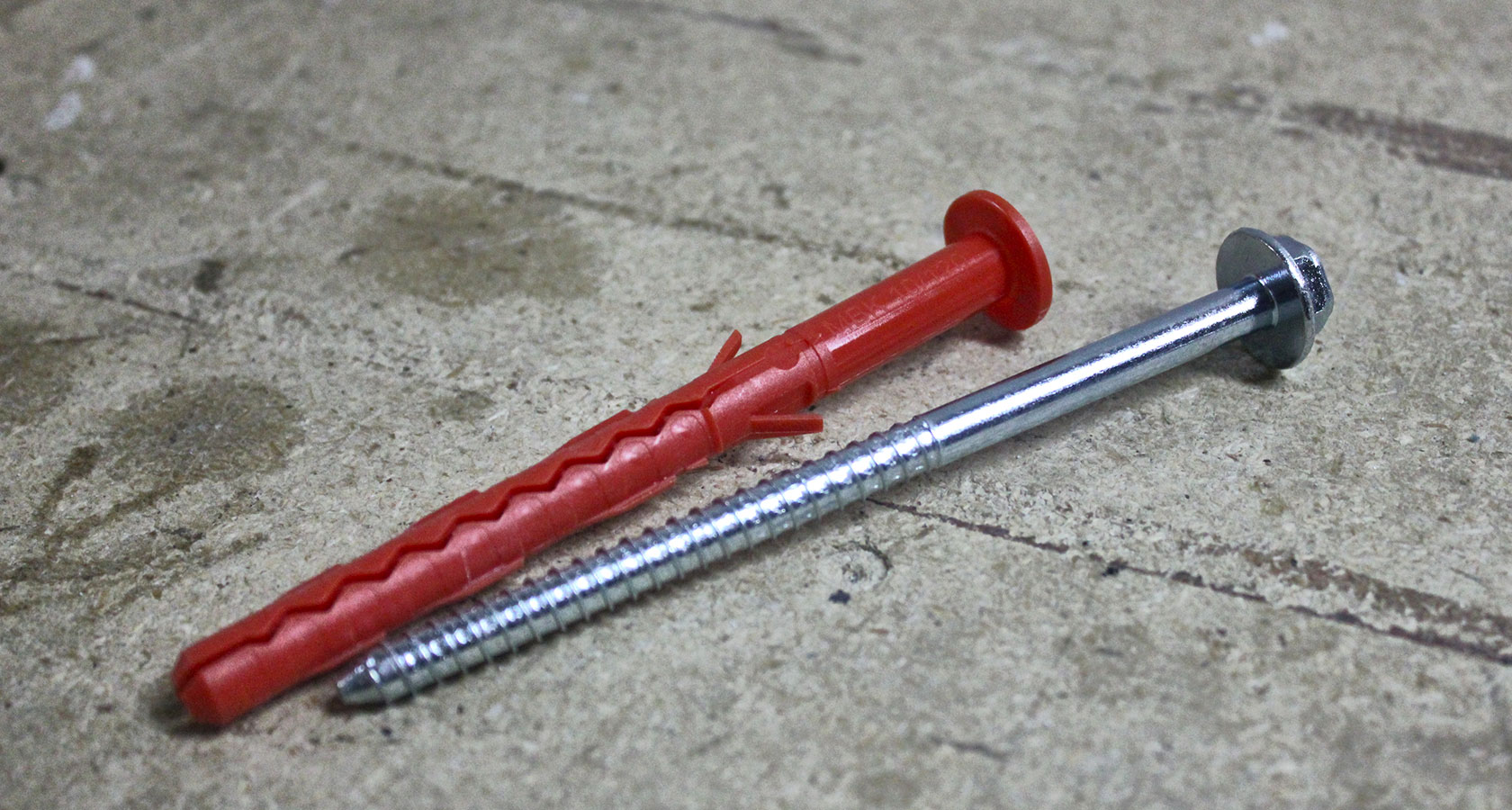


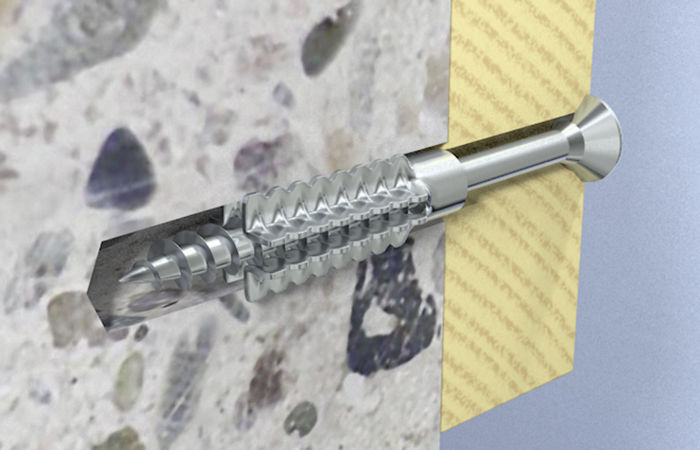
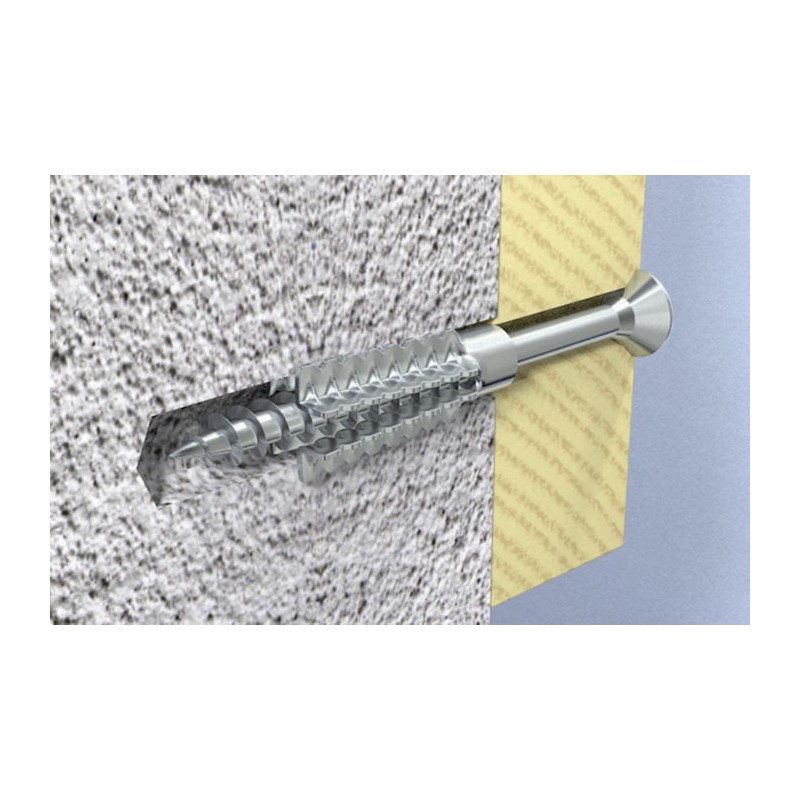

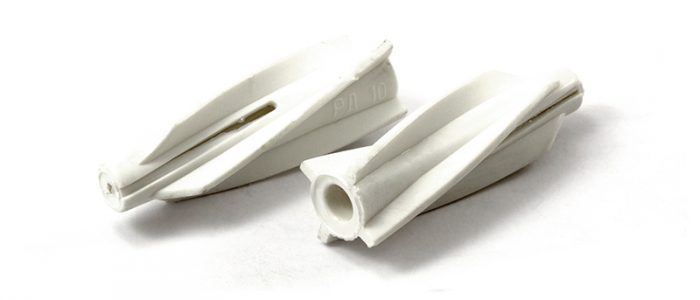

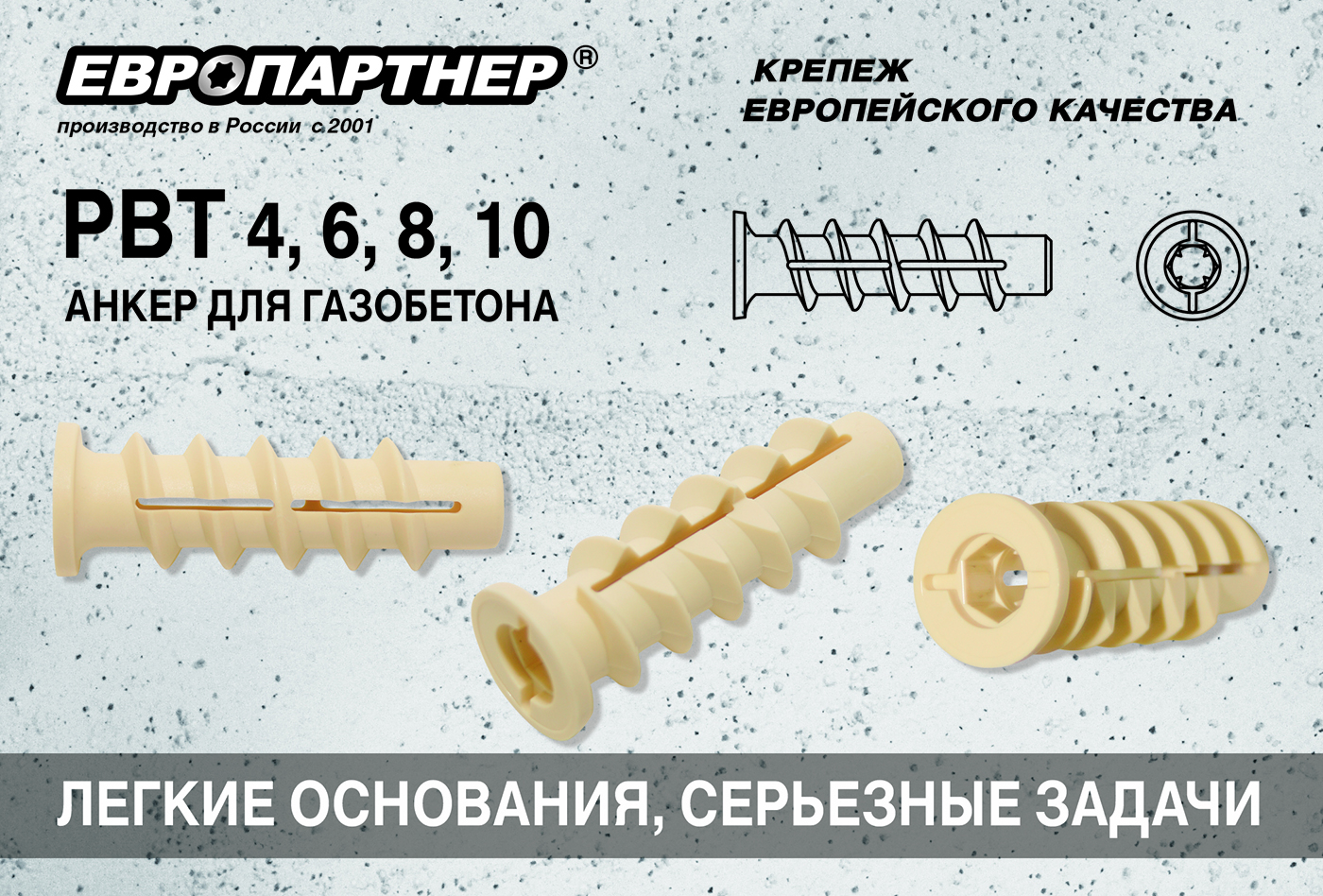
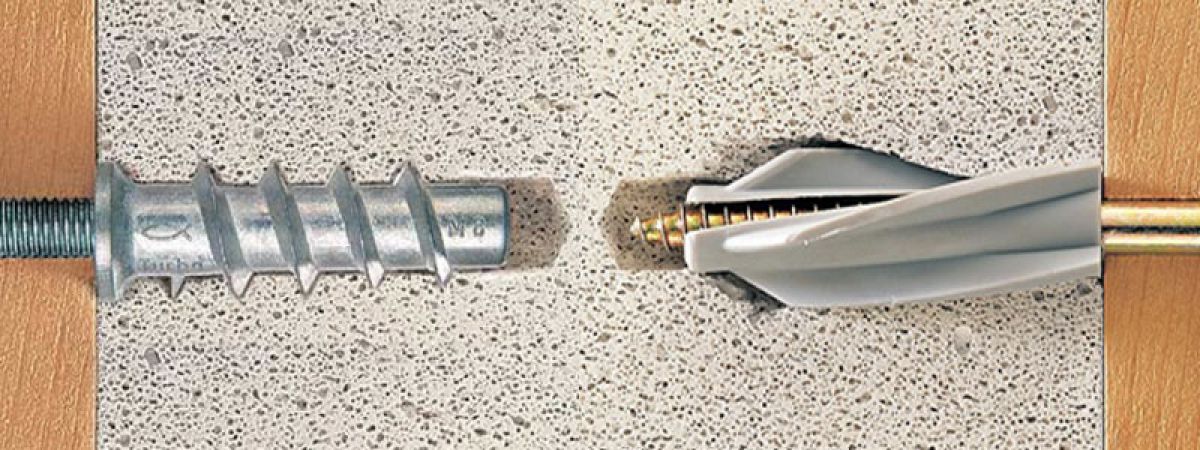
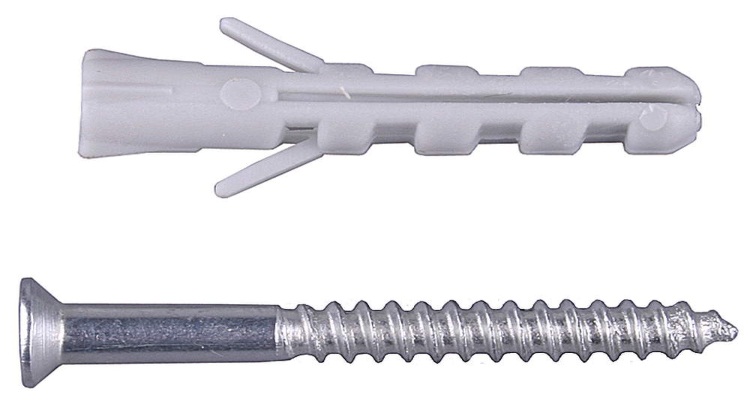
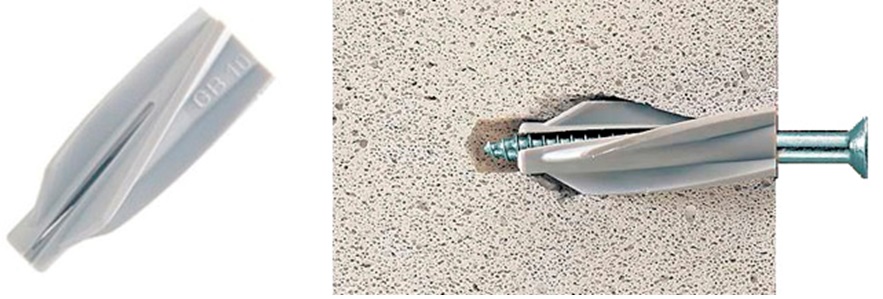
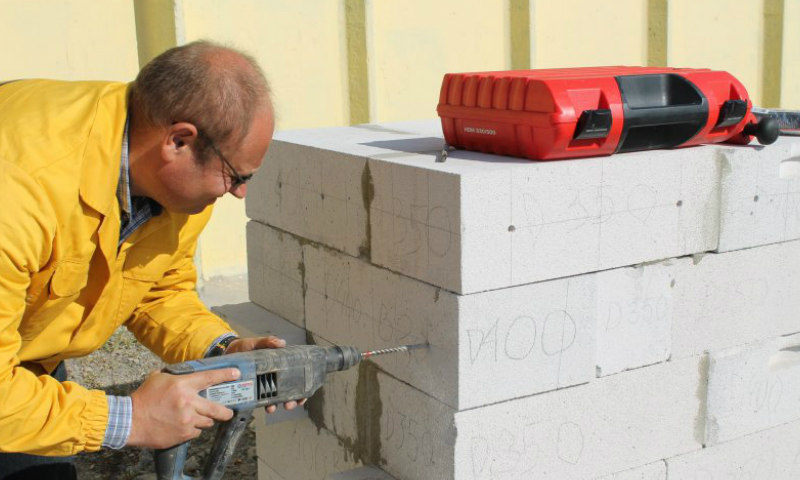
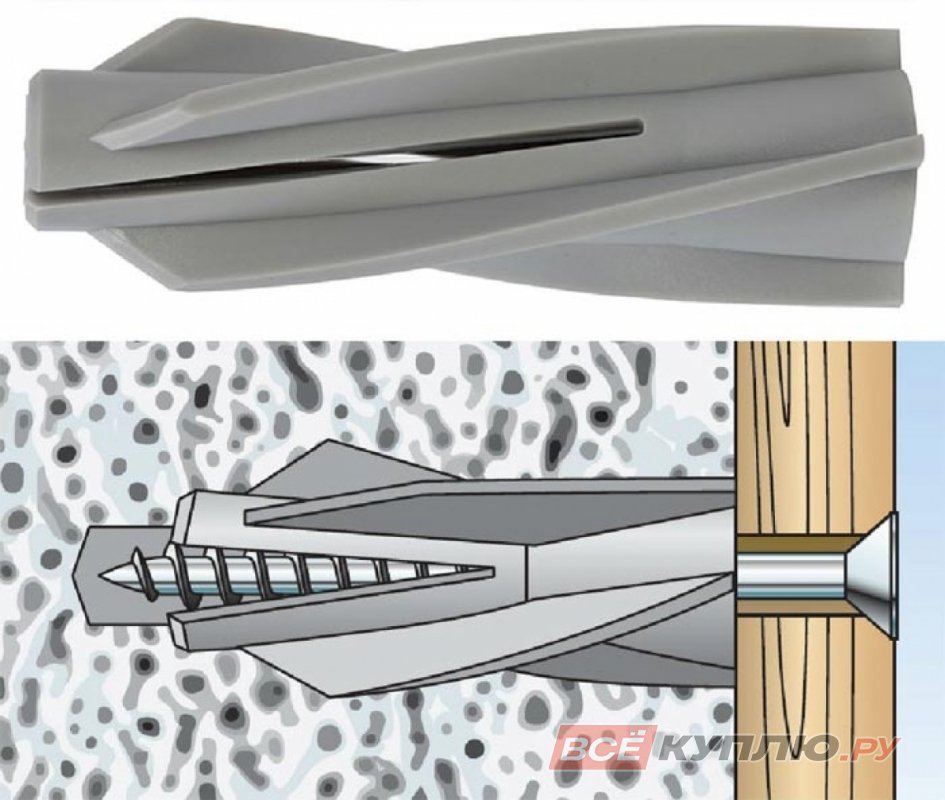

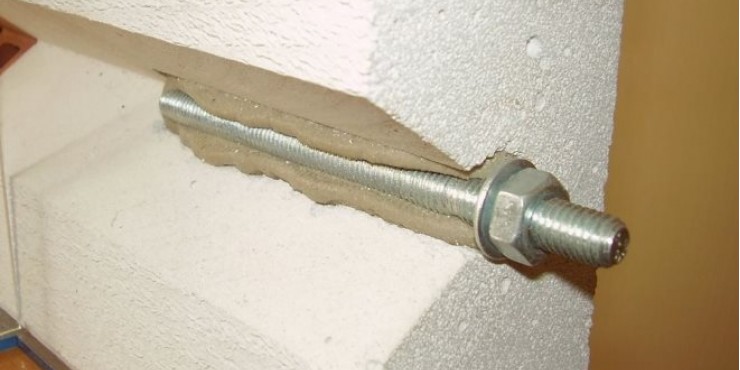
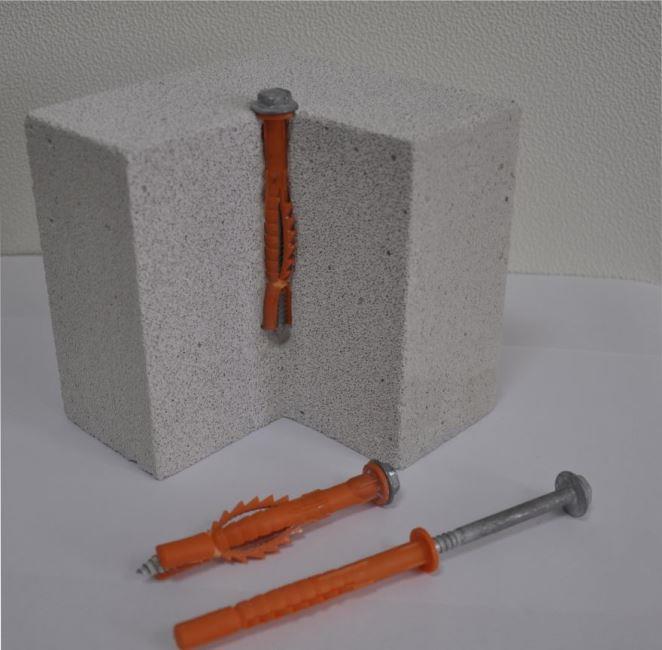
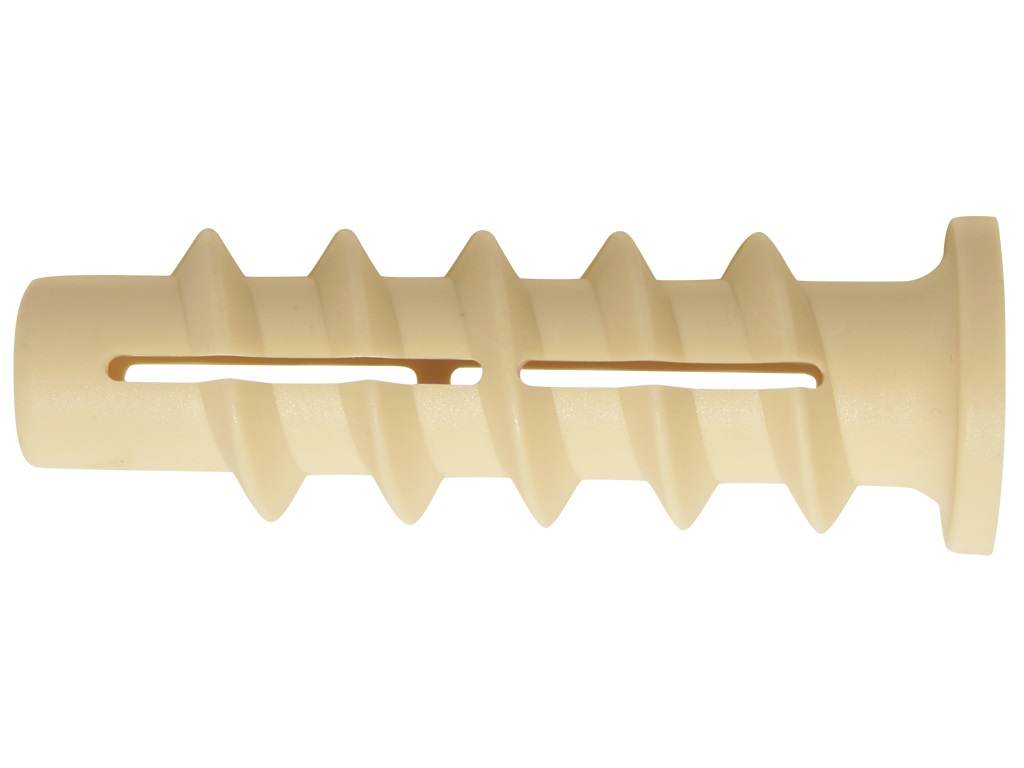
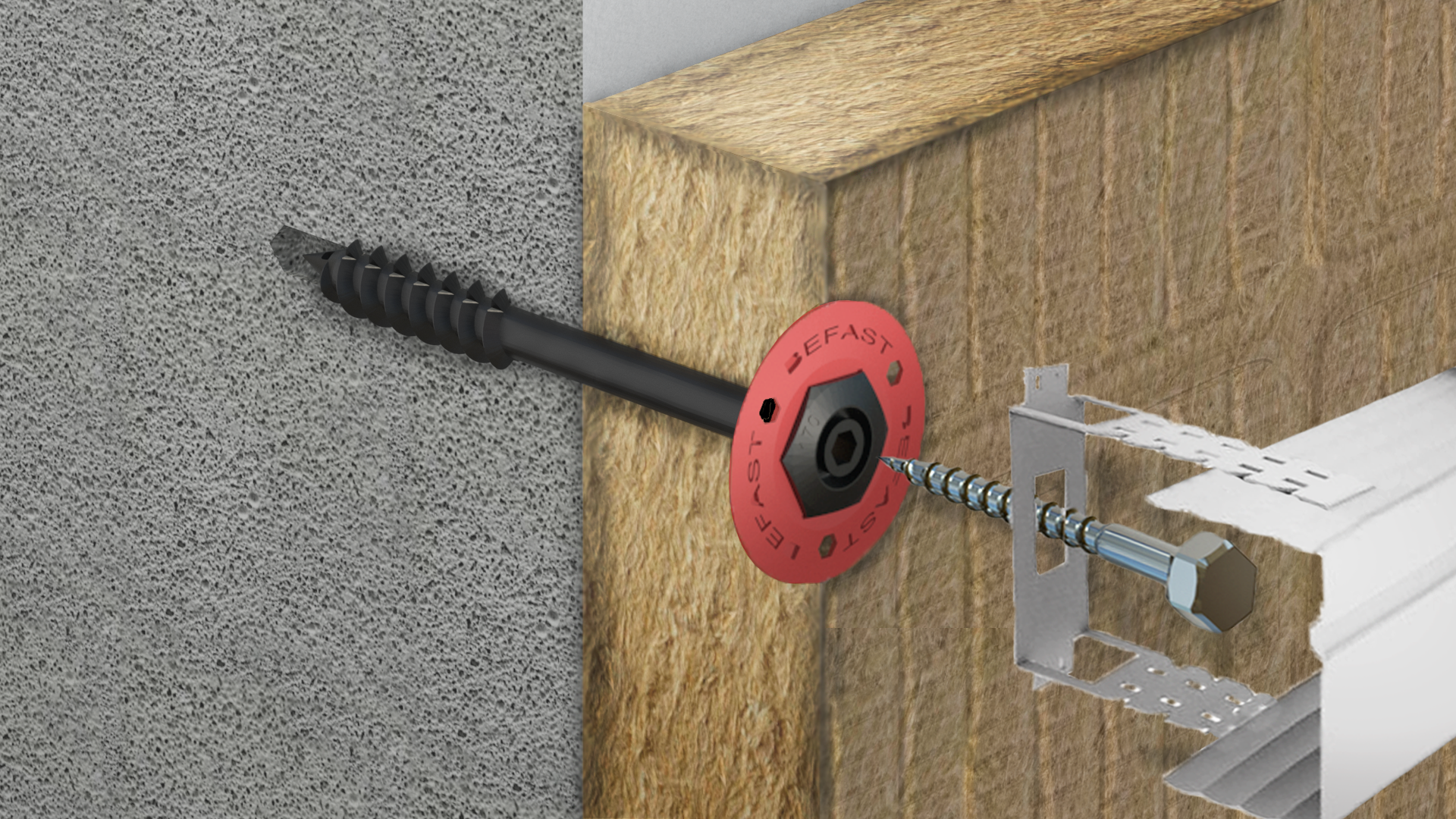

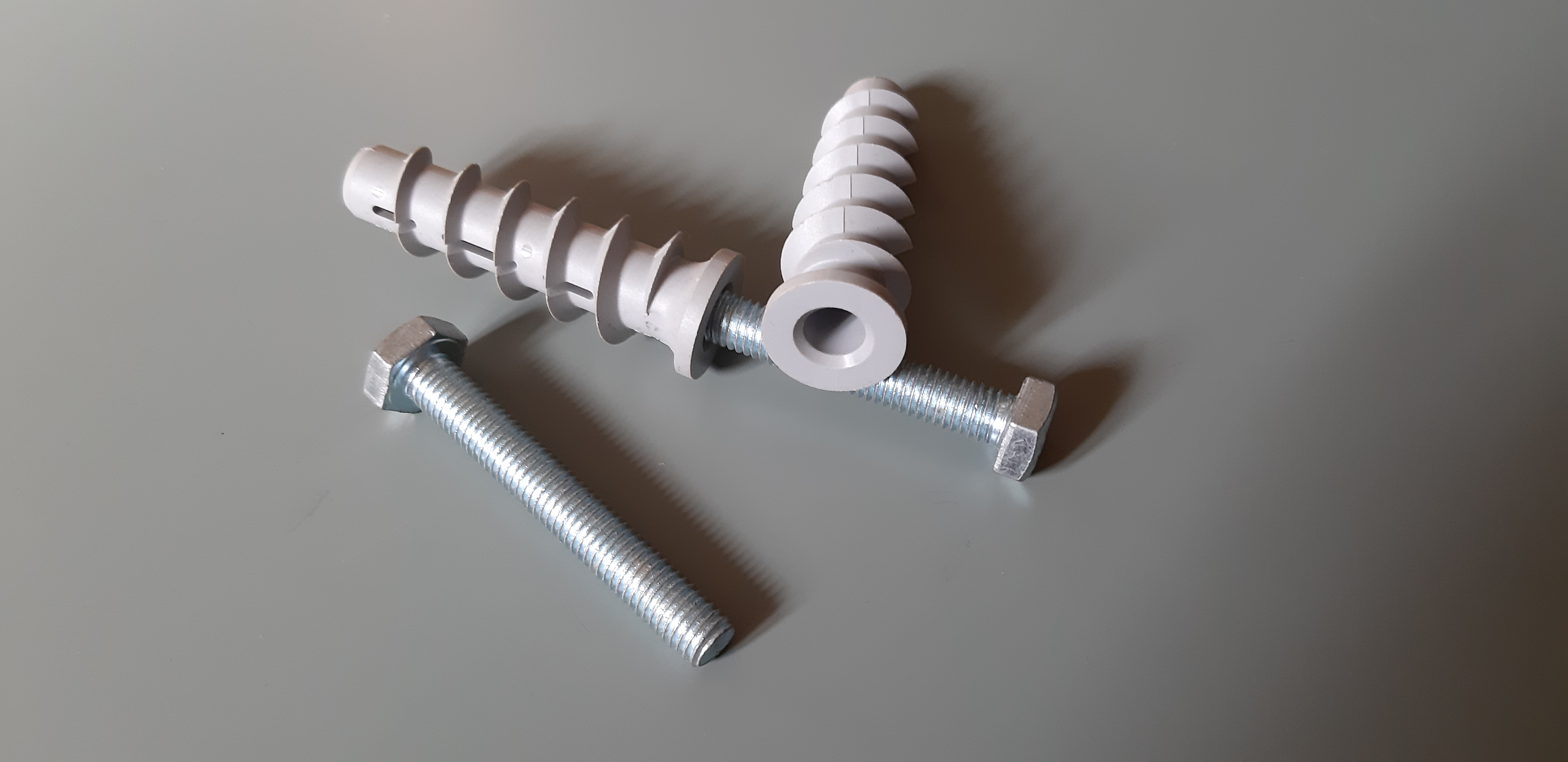
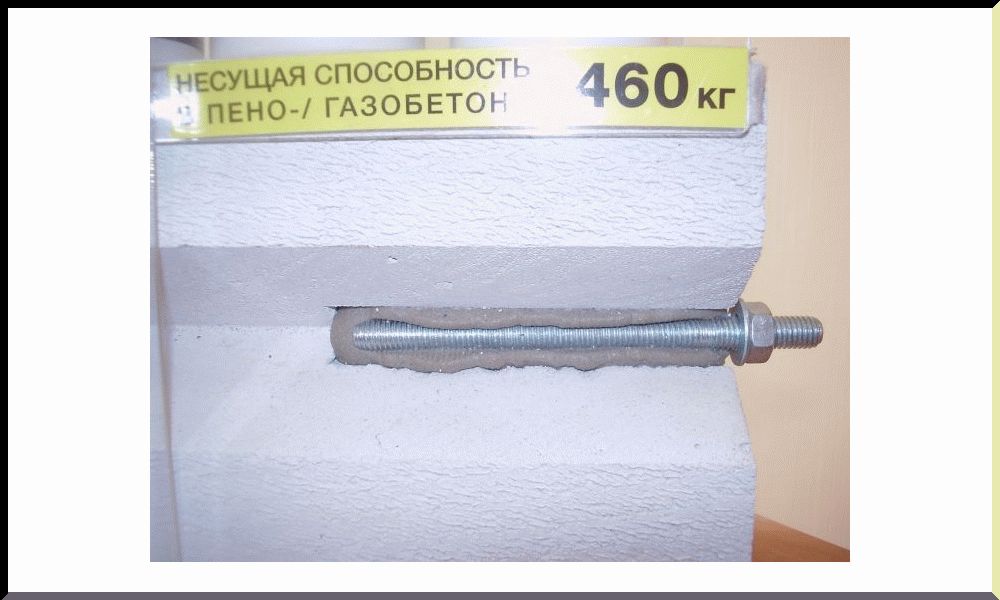

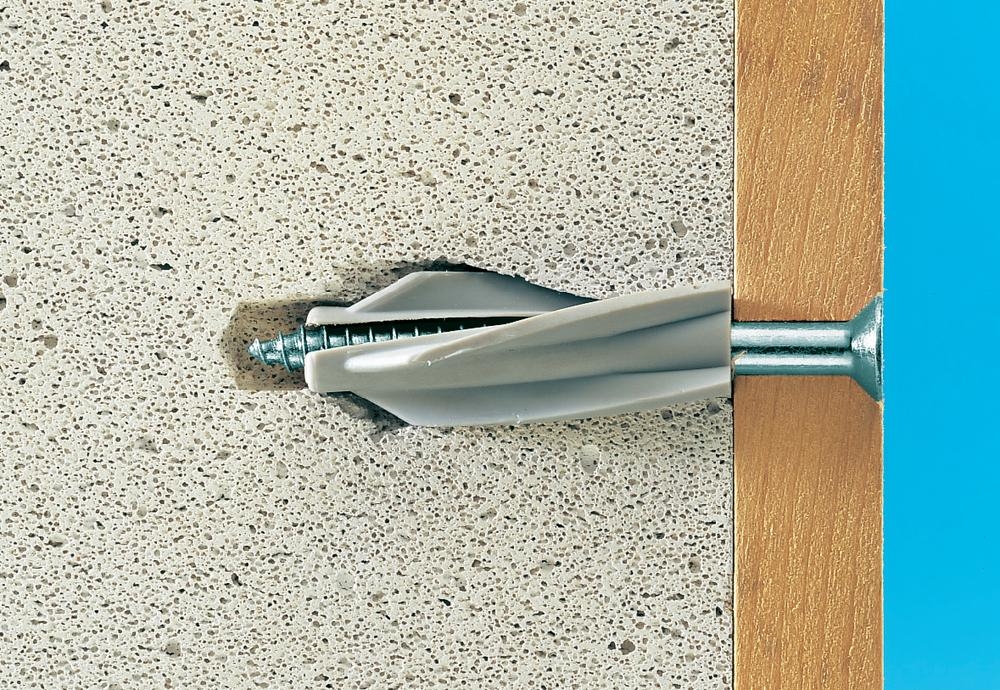


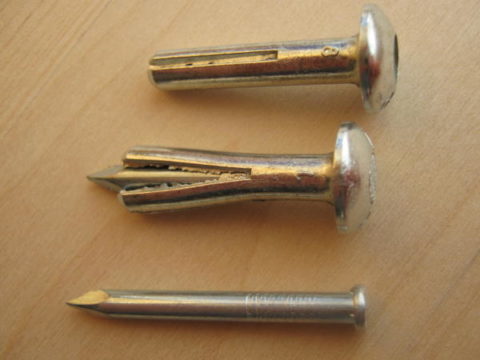 Dowel nail
Dowel nail Facade dowel universal
Facade dowel universal Expansion dowel universal nylon
Expansion dowel universal nylon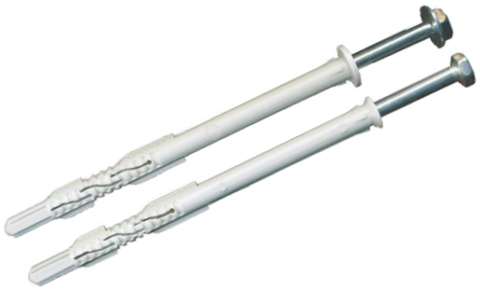 Frame dowel
Frame dowel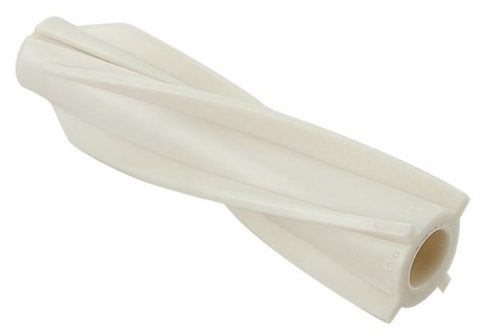 Nylon dowel for aerated concrete
Nylon dowel for aerated concrete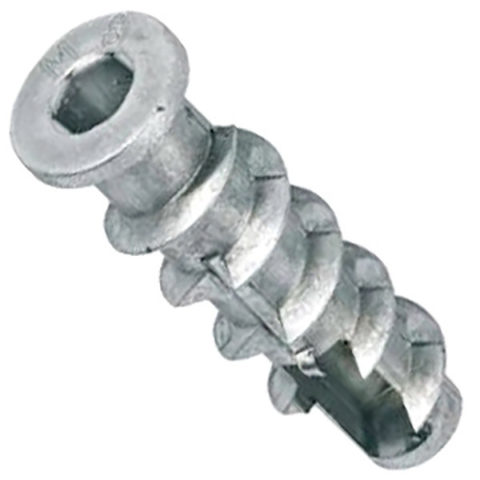 Zinc-coated steel dowel for aerated concrete
Zinc-coated steel dowel for aerated concrete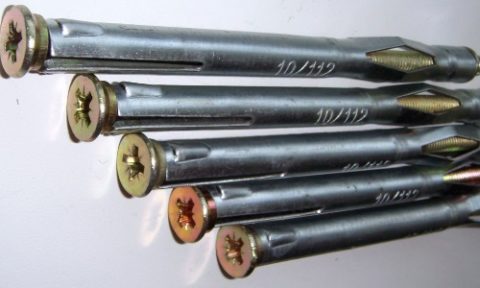 Steel anchor for aerated concrete
Steel anchor for aerated concrete